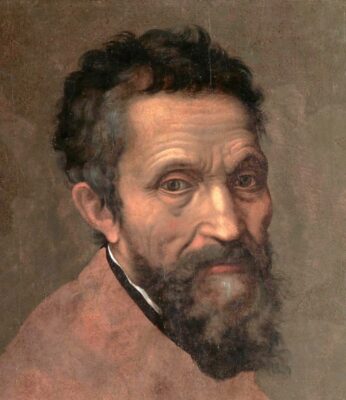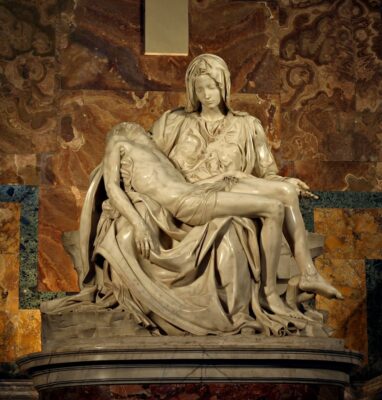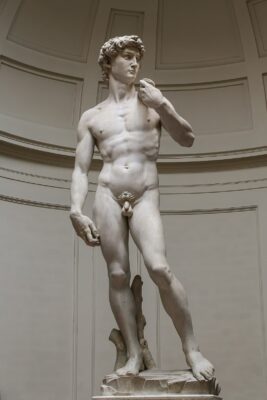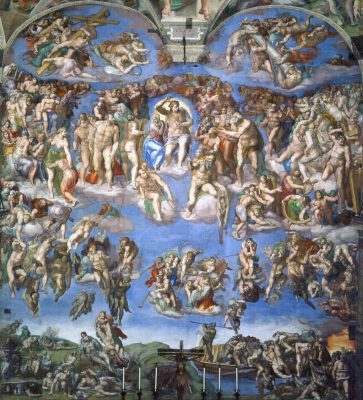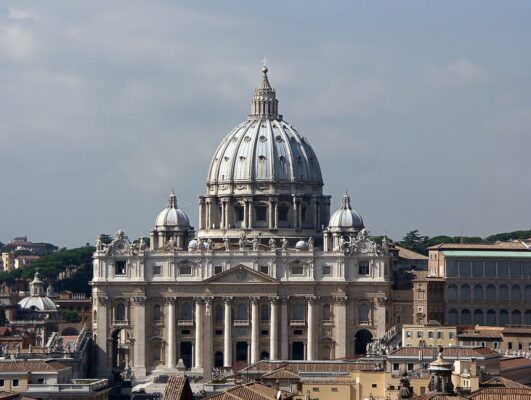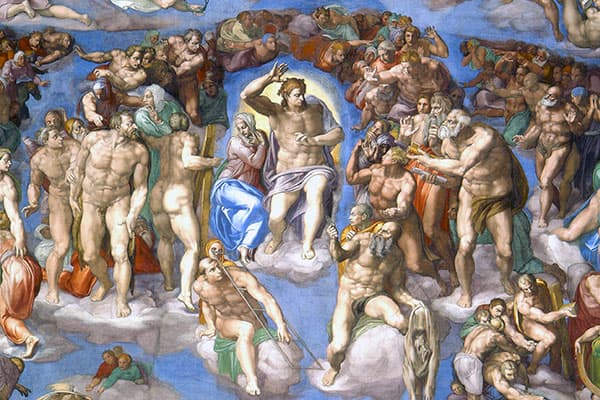Michelangelo Buonarroti
“No one who has not seen the Sistine Chapel can have a clear idea of what a human being can achieve”
Johann Wolfgang von Goethe
Although such a title may be subject of debate, Michelangelo may be the most important artist of all time. Prototype of a of Renaissance genius, vigorous and even wrathful, admired in his lifetime to the point of being called “The Divine,” he tackled colossal projects in sculpture, painting and architecture, creating masterpieces in all these fields.
Image: Daniele da Volterra: Portrait of Michelangelo, c.1545. Oil on panel, 88.3 × 64.1 cm
Michelangelo Buonarroti was born in 1475 in Caprese, a village in Tuscany, although his family moved to Florence shortly thereafter. His mother died when Michelangelo was just six years old, and he moved with his father to Settignano, where his father worked in a marble quarry, leading many scholars to believe that it was there that the young artist acquired his love for stone-carving. Be that as it may, as a teenager he returned to Florence, entering as an apprentice in the studio of Domenico Ghirlandaio. Some reliefs, such as the “Madonna of the Stairs“, now in the Casa Buonarroti, are attributed to this period.
In 1492, Michelangelo temporarily left Florence and returned to his father’s house. There he created what was possibly his first masterpiece, a huge “Hercules“, now lost. He briefly returned to Florence, where one of his patrons commissioned him to make a sculpture “with the appearance of being ancient”, so that it could be sold for a high price. Although the trick was discovered by Cardinal Raffaele Riario, Michelangelo’s skills impressed him so much that he invited the artist to travel to Rome, where he created his “Bacchus“, a work preserved in the Bargello Palace in Florence, and the first of his undisputed masterpieces, the “Pietà” in the Vatican (1498-99).
Michelangelo: “Pietá”, 1497. Marble, 174 cm high. St. Peter’s Basilica. ·· Michelangelo: “David” (1501–1504). Marble, 517 cm high. Galleria dell’Accademia, Florence
He returned to Florence in 1499, where he was commissioned to create what is now his most famous sculptural work and possibly the most famous sculpture ever created: the colossal “David“ (1501-1504, originally located in the Piazza della Signoria, now in the Galleria dell’Accademia in Florence). About this sculpture, Giorgio Vasari wrote that Michelangelo “has surpassed all modern and ancient statues, Greek and Latin (…) And truly whoever sees this sculpture need not care to look at any other sculpture, whether made in our times or in other epochs.”
Also during these years, Michelangelo was commissioned to participate in what could have been the most important pictorial ensemble of the Renaissance, the frescoes for the Palazzo Vecchio, in which he was selected to paint a “Battle of Cascina” while Leonardo da Vinci was to paint the “Battle of Anghiari”. In fact, “for many authors the most important work that Michelangelo did in Florence during the stay of 1501-1505 was not the statue of ‘David’, but the fresco of ‘ Battle of Cascina’, or rather, the preparatory cardboard for it” (Tomás Llorens, “Michelangelo”, 1993). Neither of these works has survived to the present day, and, in the case of Michelangelo’s painting, it is believed that it was never begun, beyond a preparatory cartoon.
In 1505, Michelangelo was already one of the most admired artists in Europe. He travelled to Rome, invited by the Pope, where he created the spectacular Tomb of Julius II, whose colossal scale anticipates the architectural projects that Michelangelo would later undertake. Also in Rome he began his most ambitious project: the frescoes of the Sistine Chapel, one of the greatest works of universal art.
Michelangelo worked on the Sistine Chapel in two stages: between 1505 and 1512 he painted the ceiling of the building (where the iconic “The Creation of Adam” is located), and between 1534-1541 he painted on the altar wall “The Last Judgment“, a colossal composition in which Michelangelo creates a universe of vigorous titans, formed by almost sculptural volumes. This work was chosen in 2006 by theartwolf.com as one of the masterpieces of painting.
Michelangelo: “The Last Judgment” (1536-1541). Fresco, 13.7 m × 12 m. Sistine Chapel, Vatican. Bramante, Michelangelo, Bernini and others: St. Peter’s Basilica.
But in addition to being possibly the most important sculptor of all time and an outstanding painter, Michelangelo was also an ambitious architect. He completed the Palazzo Farnese in Rome, which had been begun by Antonio de Sangallo the Younger, and drew up the plans for the Piazza del Campidoglio. But in this field, his most renowned work is his contribution to St. Peter’s Basilica, a project initiated by Donato Bramante and completed by Gian Lorenzo Bernini.
Michelangelo died in Rome at the age of 88. His funeral was solemn, in keeping with the importance that his figure had acquired during his lifetime, and he was buried in the Basilica of Santa Croce in Florence, in a tomb designed by the artist and historian Giorgio Vasari.
G. Fernández · theartwolf.com
Masterworks by Michelangelo
Follow us on:

